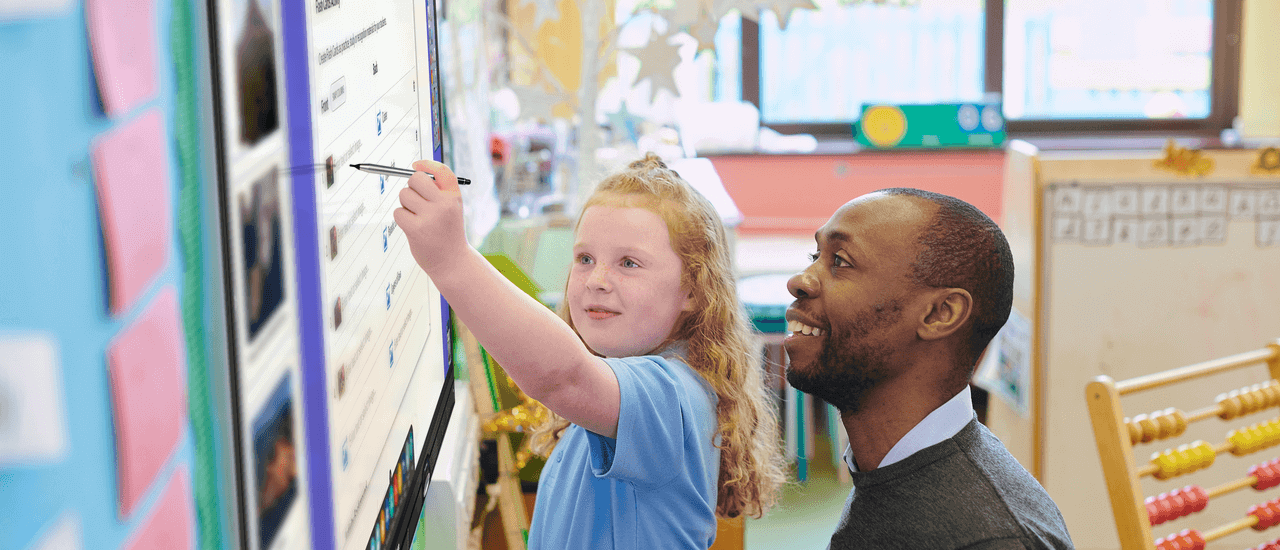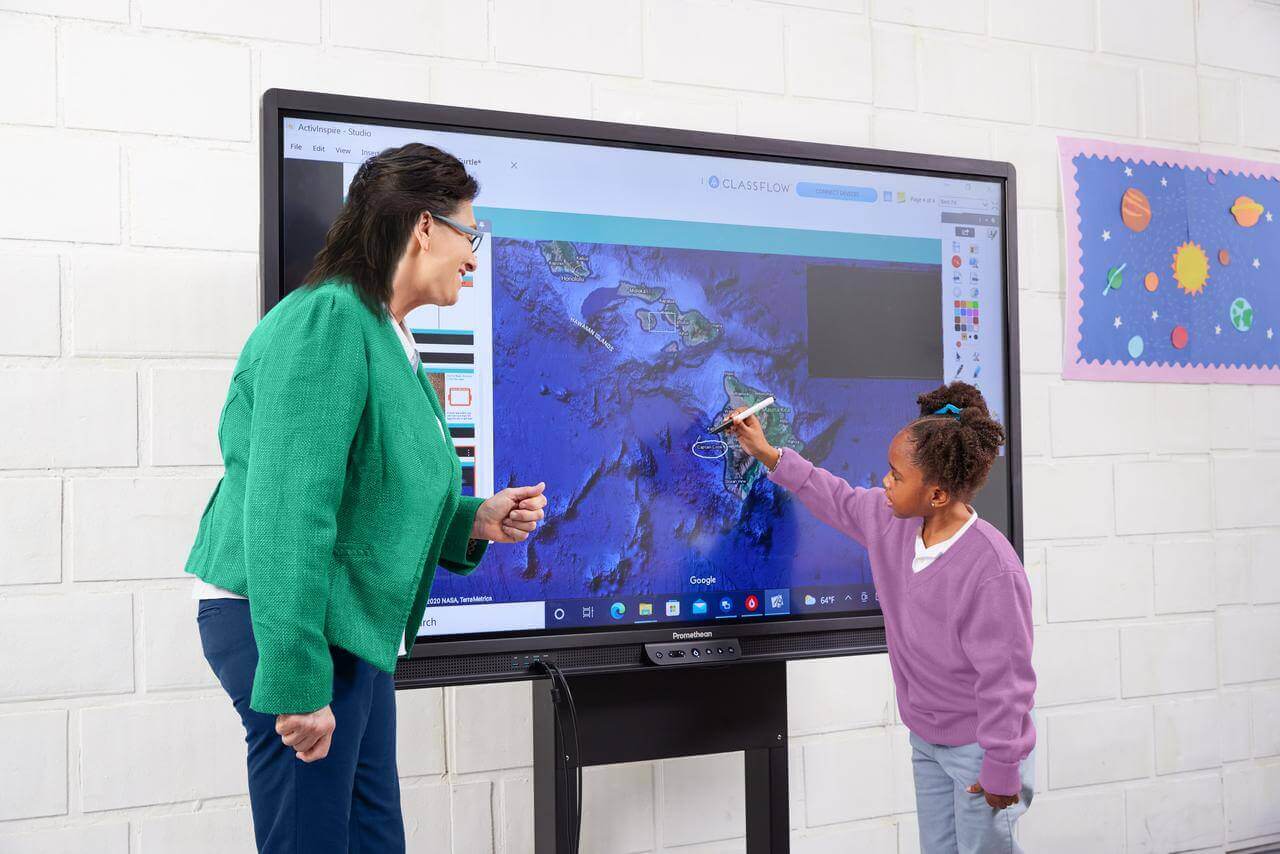The digital world offers tremendous benefits to us all. It provides platforms that allow us to connect and collaborate. It opens up opportunities to learn about new and important issues, and empowers innovation in ways that were unimaginable just a few years ago.
Today, the advancement of technology has permeated every aspect of our lives. Employers expect their workforce to have the skills needed to live, work, and thrive in a digital society. So, when preparing students for the world of work, digital literacy is essential. But what exactly is it?
What is digital literacy?
Making sure students are employable is an obvious driver for schools. So, developing technical skills is crucial. But digital literacy doesn’t just mean IT proficiency (although knowing how to use tech is now an essential life skill.)
In fact, digital literacy is separate from computer literacy. It requires critical thinking skills, an awareness of the necessary standards of behaviour expected in online environments, and an understanding of the shared social issues created by digital technologies. Or alternatively: digital literacy = digital tool knowledge + critical thinking + social engagement.
The need for digital literacy in the classroom
Digital literacy is necessary to become digital citizens: individuals responsible for how they use technology to interact with the world around them.
However, despite facing a fourth industrial revolution that is set to impact all industries and economies, UK education policy is currently failing to prepare pupils for a new breed of workplace, and a new world.
What’s more, there is a worrying rise in unhappy and anxious children emerging alongside the upward trend of childhood internet use. So, according to a report by the House of Lords, teaching students how to thrive and survive in our internet dominated world is now as important as reading and writing.
Deep learning and digital literacy
One essential component of digital literacy when it comes to the field of pedagogy is deep learning, of which there are six core skills:
- Collaboration. The ability to work collaboratively with others, with strong interpersonal and team-related skills.
- Creativity. Being able to weigh up opportunities in an entrepreneurial manner and ask the right questions to generate new ideas.
- Critical thinking. Being able to evaluate information and arguments, identify patterns and connections, and construct meaningful knowledge and apply it in the real world.
- Citizenship. The ability to consider issues and solve complex problems based on a deep understanding of diverse values and a worldview.
- Character. Traits such as grit, tenacity, perseverance, and resilience; alongside a desire to make learning an integral part of living.
- Communication. Being able to communicate effectively through a variety of methods and tools to a range of different audiences.
However, the concept of deep learning is not new. Over the years, sustained political interference and policy changes have hindered deep learning in our schools, with a focus on helping students pass exams at the expense of all else. So much so that UK schools are now among the worst in the world when it comes to nurturing deep and lasting understanding.
But, if we are going to do more than pay lip service to the importance of digital literacy, a refocus on deeper learning competencies is now a must. Here’s why the UK education system needs a return to deep-learning:
Digital literacy and e-safety
While it has the potential to deliver immense value, our online world also comes with inherent risks, particularly for children. The truth is, while younger generations are being labelled as digital natives when it comes to safety, they are often no more literate than their parents.
Digital platforms make children vulnerable to criminals and bullies. They can cause students to compare their existence to the often-fabricated online lives of others, inciting feelings of inadequacy, detachment, isolation, and even the development of mental health issues. They can also leave pupils open to misinformation, manipulation, and fake news.
Here are some practical examples to help you introduce digital literacy into your lessons:
Teach students about online safety
To teach students about staying safe online, and the threats of internet grooming, sexting, cyberbullying, and identity theft, the NSPCC has collated a number of lesson plans and online guidance. This includes advice on the importance of protecting personal information, including passwords and the distribution of photographs. Students should also be taught never to give out personal data as part of e-safety education.
Introduce students to “fake news”
Fake news isn’t just for politicians; it has now crept into the classroom. Teachers must teach their students that not everything we see and read online is true.
“More than a third of teachers are now seeing false information found online – cited in their pupils’ work or classroom discussions.” NASUWT teaching union
Challenge covert advertising
There is clear evidence that advertising and promotions have an impact on children. For example, junk food TV ads have been shown to make children hungry and tempted. So it’s no wonder that the UK Committee of Advertising Practice’s non-broadcast marketing code states that communications addressed to, targeted directly at, or featuring children (those under 16) must contain nothing that is likely to result in their physical, mental or moral harm. But protecting children from online advertisements is harder, especially when it is not always obvious what constitutes an ad.
To teach children how to spot online advertisements, teachers can ask students to explore the pervasiveness of online ads in their own lives. Once they have examined the commercials aimed at them – and identified what they are trying to sell and how – they can create new ads with positive, age-appropriate messages.
Think critically about body image
Teachers can use digital photography and Snapchat filters to encourage children to think critically about the images they are seeing. Pupils could also be invited to speak positively about themselves and others.
“Girls as young as five routinely worry about their weight and appearance, while half of girls and a third of boys aged 14 have been on a diet to change their body shape.” The Guardian
Share emotions
For young children, emojis can be used to encourage them to share how they are feeling. The oldest form of literacy, these symbols provide access to a living language that enables them to express themselves in ways that words cannot always do.
Encourage students to think ethically
Teaching digital literacy requires an ethical dimension. Students need to understand what it means to behave well online and how to act in environments where the public and private worlds are blurred. One way teachers can approach this is by challenging their students to think about what information is readily available about them online, and how others including any future employers might view and react to this.
How to improve digital literacy in your school
With limited time and increasingly squeezed budgets, getting your school’s SMT to commit to developing digital literacy can be challenging. So, what advice and support can you give to your SMT to help them get on board – while promoting your reputation as a digital leader?
Collaborate with colleagues
Consider an audit to find out who in your school is already teaching digital literacy as part of their lessons. Such collaborative planning has been shown to improve cross-curricular learning and maximise resources across departmental boundaries, as well as fostering cooperation and trust amongst teachers.
Focus on the curriculum
It’s understandable that teachers might get frustrated at “yet another thing” for them to add to an already busy teaching schedule. But digital literacy doesn’t exist in isolation. Context is key, and the best way to teach digital literacy is to figure out what that means to a particular discipline. For example, English teachers can use blogging to advance digital literacy, while Citizenship teachers can present their class with real-world problems and encourage pupils to use their computational skills to devise solutions.
Create “modern” classrooms
New pedagogical methods -such as collaborative learning, student-led learning, and flipped classrooms – are gaining popularity thanks to the rise of edtech. And, by helping teachers to instill deep learning, such evidence-based pedagogy supports digital literacy.
Make your lessons digital
It’s hard to teach students what’s needed in the online world without using digital tools, so teachers themselves must embrace digital literacy. Consider using ActivPanel devices and educational software to help students become engaged in the art of learning online.
Review your acceptable use policy (AUP)
It’s important that everyone in your school knows what is and isn’t acceptable when it comes to using tech in schools. Your acceptable use policy (AUP) probably already covers things like inappropriate social media communication and not sharing images of pupils online without parental permission. In addition, your policies and procedures should also take into account the latest guidance from the UK Council for Child Internet Safety (UKCCIS). This includes things like carrying out regular training to ensure that everyone is aware of the online safety rules and expectations and establishing monitoring and evaluation processes to ensure understanding of, and adherence to, online safety policies.
Access the latest and full UKCCIS guidance here.
Create digital ambassadors
In any school, there are digital innovators. Harness their passion and knowledge by creating a digital literacy focus group to help drive and inspire change, while increasing awareness of digital literacies across your school.
Engage your teachers
Teachers are time poor, so many schools are avoiding their responsibilities to educate students about digital literacy due to anxieties about their own staffs technical abilities. Engage with teachers early on in the process to find out what they need to teach digital literacy. This could be bite-sized guides, case studies, videos, training, or regular drop-in sessions. Ensuring buy-in is vital to your school’s overall success.
Engage your students
Build robust and productive student-staff partnerships to help develop your school’s digital environment in a way that adds real meaning to them. Encourage older students to express their views on what digital literacy means to them, and what skills they think they need to live, work and learn in an online world.
When it comes to introducing digital learning into the curriculum, educators can’t bury their heads in the sand. Instead, it is up to the government, online providers, parents, and teachers to work together to support and protect students online.
Find out more how you can create a modern classroom to encourage digital literacy with a free ActivPanel demo.




